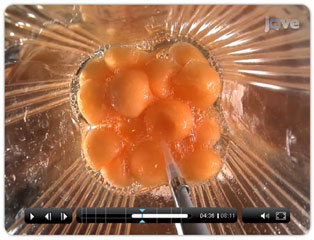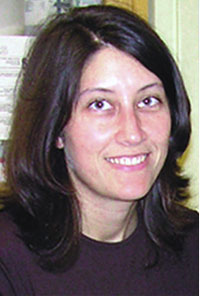March 30, 2012
Source: The Journal of Visualized Experiments
 Have you ever been disappointed by a cantaloupe from the grocery store? Too ripe? Not ripe enough? Luckily for you, researchers from the University of California, Davis might have found a way to make imperfectly ripe fruit a thing of the past. The method will be published on March 30 in the Journal of Visualized Experiments (JoVE).
Have you ever been disappointed by a cantaloupe from the grocery store? Too ripe? Not ripe enough? Luckily for you, researchers from the University of California, Davis might have found a way to make imperfectly ripe fruit a thing of the past. The method will be published on March 30 in the Journal of Visualized Experiments (JoVE).
"We are involved in a project geared towards developing rapid methods to evaluate ripeness and flavour of fruits," said paper-author Dr. Florence Negre-Zkharov. "We evaluated an electronic nose to see if it can differentiate maturity of fruit, specifically melons. The goal is to develop a tool that can be used post-harvest to better evaluate produce, and develop better breeds."
 When fruit ripens, it develops a characteristic volatile blend, indicating its maturity. Traditionally, the gold-standard of evaluating these volatiles has been gas chromatography, but it takes up to an hour to analyze a single sample, which makes it impractical to use outside the lab. Dr. Negre-Zakharov (photo) and her team wanted to determine if the much cruder— but much faster— electronic nose was able to determine if the melon they used in the experiment were ripe. It was.
When fruit ripens, it develops a characteristic volatile blend, indicating its maturity. Traditionally, the gold-standard of evaluating these volatiles has been gas chromatography, but it takes up to an hour to analyze a single sample, which makes it impractical to use outside the lab. Dr. Negre-Zakharov (photo) and her team wanted to determine if the much cruder— but much faster— electronic nose was able to determine if the melon they used in the experiment were ripe. It was.
"It’s quite encouraging technology for the purposes of determining maturity," she said.
The project is part of the Specialty Crops Research Initiative, funded by the United States Department of Agriculture, which was "established to solve critical industry issues through research and extension activities." Dr. Negre-Zkharov and her team are working on quantitative methods of evaluating fruit-ripeness in the hopes that it will help the industry produce better quality produce.
"It's very impressive that the electronic nose system can do a type of gas chromatography in about a minute. Ultra-fast, indeed. Also, the sample preparation is as easy as making a smoothie at home. Such a user-friendly system could greatly help analysis efficiency in this field," said JoVE Science Editor, Dr. Zhao Chen. "Given the popularity of JoVE video-articles, I expect many researchers will know and adopt this method in their own research."
Since the very nature of the project is to give people useful tools, the researchers decided to publish in JoVE, the only peer reviewed, PubMed-indexed science journal to publish all of its content in both text and video format.
"We thought that the best way to get people to adopt the method was showing a video, instead of publishing a text," said Dr. Negre-Zkharov.
The next step is to take the electronic nose out into the field to determine if it can still determine fruit maturity with all of the background smells interfering— like soil and air-quality. Though the team has already tested the device in the field, they have not yet analyzed their results.
To watch the full video article, please click here:
http://www.jove.com/video/3821/fruit-volatile-analysis-using-an-electronic-nose
The Journal of Visualized Experiments (JoVE) is the first and only Pubmed and Medline indexed academic journal devoted to publishing research in the biological sciences in video format. Using an international network of videographers, JoVE films and edits videos of researchers performing new experimental techniques at top universities, allowing students and scientists to learn them much more quickly. As of January 2012 JoVE has released 59 monthly issues including over 1500 video-protocols on experimental approaches in developmental biology, neuroscience, microbiology and other fields.
Fruit Volatile Analysis Using an Electronic Nose
Simona Vallone1, Nathan W. Lloyd2, Susan E. Ebeler3, Florence Zakharov1
1Department of Plant Sciences, University of California, Davis
2Department of Chemical Engineering and Material Science, University of California, Davis
3Department of Viticulture and Enology, University of California, Davis
A rapid method for volatile compound analysis in fruit is described. The volatile compounds present in the headspace of a homogenate of the sample are rapidly separated and detected with ultra-fast gas chromatography (GC) coupled with a surface acoustic wave (SAW) sensor. A procedure for data handling and analysis is also discussed.